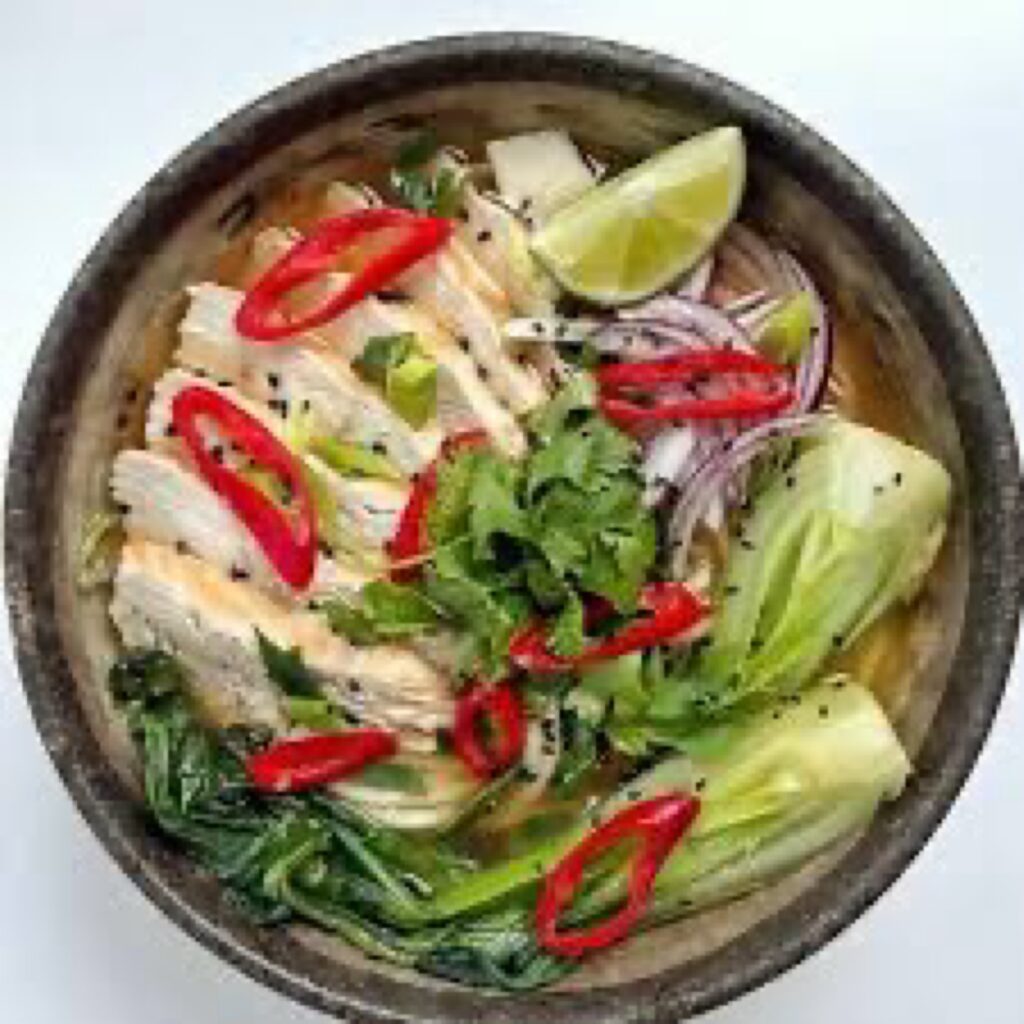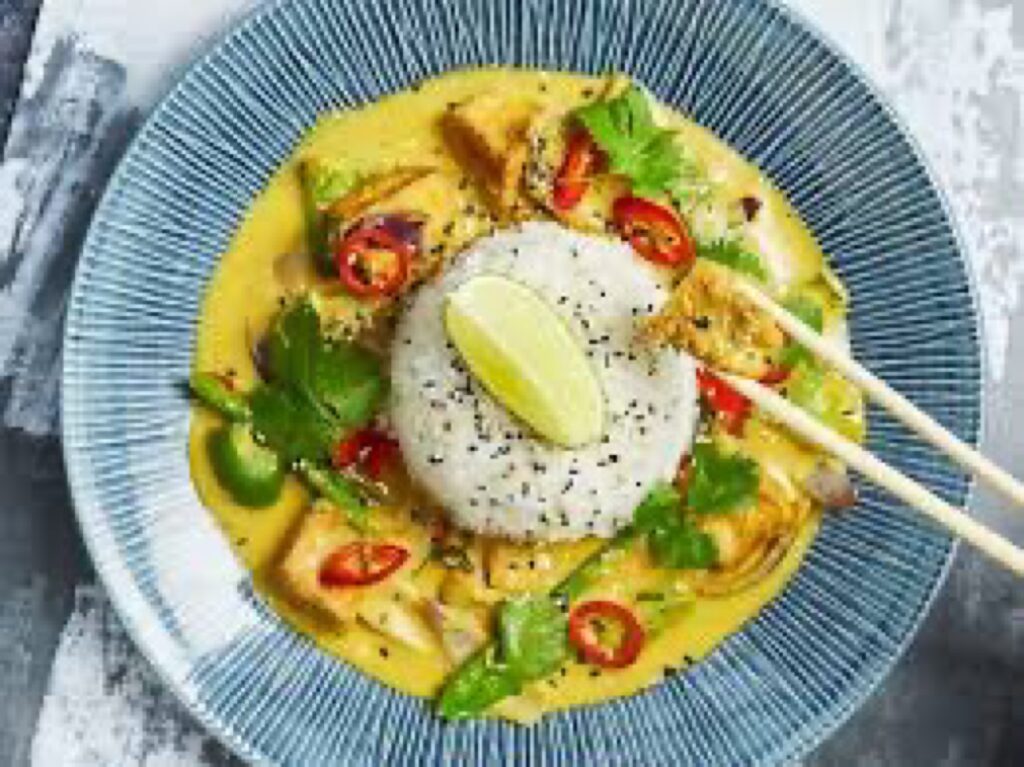Chopsticks have become such convenient utensils for East Asian Cuisines that others have acquired some dexterity in it’s use.
Style or method is not the aim. Just the eagerness get to the meal as long as it serves it’s purpose.
Simple in form and function. You just cannot get any simpler than 2 sticks. Think about it.
Perfect for noodles and bite size portions of food. Having used a pair, there is no going back as you appreciate its purpose.
Chopsticks also give’s one a clue why the East Asians prepare meals that seldom require cutting or slicing to smaller bite sized pieces when at the meal table with a fork and knife. It is done ahead in the kitchen prior to cooking.
Limitation
What it is not designed to do is to lift large or heavy portions of food. Spaghetti comes to mind. Try it, your fingers will ache.
It also does not work for Western food which is seldom diced or in bite sized portions. Think steak, fish and chips and the full English breakfast with bacon, sausages, egg etc. Hence the use of cutlery knife paired with a fork.
So out goes the chopstick for most non-East Asian cuisines.
Those who are new to chopsticks or keen to use the right method can head to YouTube. Lots of videos on how to use a pair of chopsticks. But sadly not when to use it.

Now for the meat of this article, pun intended.
While travelling in South East Asia I noticed its widespread use on a daily basis. South East Asia has a large number of locals of Chinese heritage in Indonesia, Thailand, Malaysia and Singapore. Naturally there is ready availability of Chinese cuisine. Hence its use
Understanding when to use chopsticks is just as important as how to use it. Not all East Asian cuisine are suitable for chopsticks.
Believe me it’s tough just to work out inter-cultural nuances.
Not all East Asian Cuisine lends itself to chopsticks
Here is one incident where a couple I met got it wrong. It was couple that I met who had a number of years under their belt in South East Asia as expatriates. So I assumed they knew the ropes. .
We decided to go local, foodwise. Both were keen to show their familiarity and assimilation of things local while enjoying Asian.
They chose a Chinese restaurant that served dishes with rice. A common standard spread and always delicious. We ordered a vegetable dish and 2 meat dishes and rice. It was going to be shared meal something Asians do at home and at family affairs as a family.
They took to chopsticks. I deferred as the restaurant laid flat plates so it was fork and spoon for me. It dawned on me that they would struggle. Or maybe they were skilled in its use.
It was a struggle from the word go. The hardest part was eating the rice with a pair of chopsticks but they did not relent. Its was not problem however when picking pieces of meat and vegetables.

Learning from others
I looked around the restaurant, noticed the local Chinese in the same restaurant were using folk and spoon with flat plates. My knew chopsticks are not for flat plates with rice.
Looked around more and saw when noodles were consumed or rice served in bowls, they chose chopsticks. But when it was a flat plate with rice it was always fork and spoon. That made so much sense.
Took a while and I realised there were rules on chopstick use.
Rule 1. Noodles even when served even on flat plates using chopsticks was fine.
Rule 2. Dishes served on flat plates with rice and pieces of meat that require some form of separation before lifting called for folk and spoon. So no chopsticks.
Rule 3. You can still use chopsticks if the rice is served in a bowl. You use chopsticks with a Chinese soup spoon. I will explain this further down.
It was more nuanced than I initially thought or long held. Once I worked out the mechanics it was plain sailing.
In essence chopsticks can’t be used for all Chinese or East Asian dishes. You look at the food before reaching out for the right cutlery.
Like the couple, many expatriates get it wrong in their desire to assimilate.
Chopstick protocol
I also learnt something else over time.

Many Chinese restaurants even in the UK and the US sometimes offer patrons the choice of bowls with chopsticks or flat plate with fork and spoon. These dishes always prepared with chopsticks in mind with no need to cut and slice.
The exception is steamed or fried whole fish. Once placed on the table, the waiter or one of the patrons in the group would use a fork and spoon to cut it in smaller portions. There is an art to it and best left to the waiter.
Working on probability they typically do not make the offer of chopsticks and bowl to non-Chinese patrons. They simply place flat plates with fork and spoon. If you are comfortable you can ask for bowls and chopsticks and they will be pleased to accommodate.
Now for the unusual Chinese soup spoon.
For the longest time ever, I always thought Chopsticks was a only utensil for Chinese dishes. How wrong I was.
Chopsticks always comes with a spoon. Not an ordinary spoon but a Chinese soup spoon with its unique design. Another thing Western expatriates get wrong.
The spoon design explains why it is always present with chopsticks.
The chopsticks are used to push a small portion of rice onto the spoon, place a piece of meat or veg on the rice and it then taken to the mouth. The spoon with the rice and meat or vegetable that is.
If you having noodles or taking a portion of meat or vegetable alone, the chopsticks are fine.
The Chinese soup spoon
In a nutshell, chopsticks are always used with a spoon, often referred to as the Chinese soup spoon.
I note that other East Asian cultures like the Japanese and Koreans also use spoons but with slight variations in design.

A little bit more about the Chinese soup spoon.
I tried using it for both the mulligatawny and tomato soup. Believe me it is well designed. Its shape allowed it to take in more compared to the shallower western styled spoon. It is also excellent for porridges.
Not sure if it was my imagination but there was a slight drop in temperature as well. Probably because it was ceramic.
However, it did not sit well custom-wise when consuming western soups or dishes. So it remains for Chinese cuisine. When in Rome, I guess.
If all these seem unnecessarily complex do not worry. Go for the food and work with what you are comfortable with. Start working out the nuances in steps and over time I am sure you will get it.
To recap:
- Not all Chinese dishes call for chopsticks.
- Rice served on flat plate calls for fork and spoon while chopsticks are when it is served in bowls.
- Restaurants will accommodate your request for either when the dishes allow it.
- Noodles served on flat plate is fine with chopsticks as the accompaniments such as meat are prepared in bite sized portions that is ready for chopsticks.
- Remember the food is why you are there and work with what you are comfortable with.
Travel does that to you. Learning and understanding people and their cultures.
